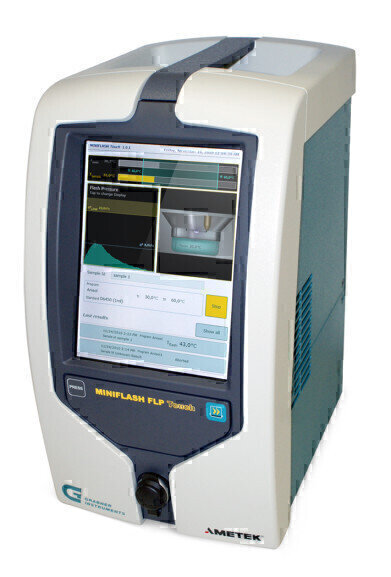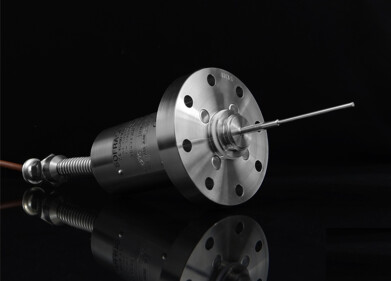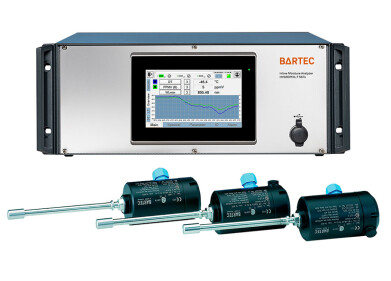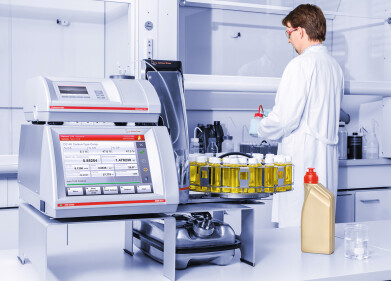Measurement and Testing
An alternative to Pensky-Martens: MINIFLASH Touch’s flashpoint testing method D7094.
Oct 12 2018
MINIFLASH Touch can be used to determine the flashpoint of class 3 flammable liquids. According to the Department of Transportation in the United States, the instrument’s mini-method is an acceptable alternative to Pensky-Martens when testing the flashpoint of fuels and hazardous liquids.
Flashpoint is defined as the lowest temperature at which a sufficient amount of a substance is vaporized to ignite in air. Flashpoint testing was originally used to show that kerosene was a fire hazard, but current regulations call for the control of a variety of substances sold commercially. Determining the flashpoint of a substance, especially that of class 3 flammable liquid is important for both secure storage and transportation.
Developed by Grabner Instruments, a subsidiary of AMETEK Inc., MINIFLASH Touch’s mini-method uses spontaneous pressure to determine the flashpoint. The instrument uses a closed-cup and no open flame – two characteristics that increase the safety of testing fuels and other flammable liquids.
“With classical methods of flashpoint testing, the open flame produced during the tests that poses a high risk, especially for refinery laboratories. For example, an operator testing jet fuel with a flash point of about 50 Celsius, but in fact running naphtha, which has a
flash point of -20 Celsius risks an explosion. Commonly, such incidents happen when samples are contaminated with highly volatile components such as the presence of gasoline in diesel fuel”, explains Oliver Sauer, Director of Sales at Grabner.
The American definition of class 3 flammable liquids in 49 FCR § 173.120 includes substances that have a flashpoint of not more than 60 degrees Celsius as well as material in a liquid phase, that has a flashpoint equal to or above 37.8 degrees Celsius and is intentionally heated and transported at or above its flashpoint a bulk package. Besides chemicals and solvents, certain diesel fuels also fall under the category of class 3 flammable liquids.
The highly reproduceable results achieved with MINIFLASH Touch first received recognition in 2004. At that time, the American Society for Testing and Materials (ASTM International) codified the mini-method for flashpoint testing under D7094 and stated that “there is no statistically significant bias observed between D7094 and D93 Procedure A”.
In 2013, ASTM International reiterated its confidence in the mini-method and included D7094 in the specifications for diesel fuels D975, D396, D2880 and D3699 and into specifications for biodiesel blends ASTM D7467. The inclusion of D7094 in diesel fuel specifications guaranteed that petrochemical and transportation companies had an alternative to the traditional Penky-Martens method.
“According to the round robin performed for ASTM D6450, the repeatability is 1.9 C and the reproducibility is 3.1 C. For ASTM D7094, the repeatability is 4.1 C and the reproducibility is 5.5 C. The repeatability and reproducibility for the Pensky-Martens tester for the same
sample set were 4.1 C and 6.9 C, respectively”, says Sauer.
MINIFLASH Touch presents a series of advantages over other flashpoint analyzers available on the market. In contrast to the 70-75 milliliters samples required by instruments from other manufacturers, Grabner’s MINIFLASH Touch runs accurate tests on 1-2 milliliter samples.
The procedure for determining the flashpoint of a substance also takes less time when completed with Grabner’s analyzer. Typically, no more than 1.5 minutes hands-on time are required for a MINIFLASH Touch measurement, compared to 13 minutes of continuous attendance by an operator, who is testing with a Pensky-Martens unit. This is mainly owed to the fact that the MINIFLASH method is a much safer procedure, because there is no open flame and only a minimum of sample is used per test.
The short hands-on time amount to great savings for large refineries and transportations companies: considering 20 measurements per day, the use of MINIFLASH Touch in place of competing flashpoint analyzers can generate up to 60,000 USD per year in savings.
For more information on safe and cost-efficient flashpoint testing contact Grabner Instruments at grabner.sales@ametek.comor visit the website www.grabner-instruments.com.
Digital Edition
PIN 25.2 Apr/May
April 2024
In this Edition Safety - Carbon monoxide toxic and flammable gas detection Analytical Instrumentation - Density: A fundamental parameter at critical stages within the petroleum sector...
View all digital editions
Events
May 05 2024 Seville, Spain
May 06 2024 Riyadh, Saudi Arabia
May 06 2024 Houston, Tx, USA
May 06 2024 Houston, Tx, USA
Canada Gas & LNG Exhibition & Conference
May 07 2024 Vancouver, BC, Canada


















